Hot-Spot Identification, Thermo-Scanning at Electrical Substations
What is Thermal Imaging of equipment & conductors at electrical substations?
First of all, let’s see, what happens if thermal imaging is not done regularly. If a hot spot is not identifies and attended on time, then it can break the palm, nut bolt, or conductor. This leads to unwanted breakdowns. With this example, it is evident that regular thermal imaging of electrical equipment and conductors is necessary, to identify thermal anomalies and prevent possible breakdown.
Now, let’s see, how do we do thermal imaging? It is done with the help of an infrared camera. At some substations, an infrared camera is fixed at one location, and it covers a certain area of the substation. Hence to cover the complete substation, multiple cameras are fixed at different suitable locations.
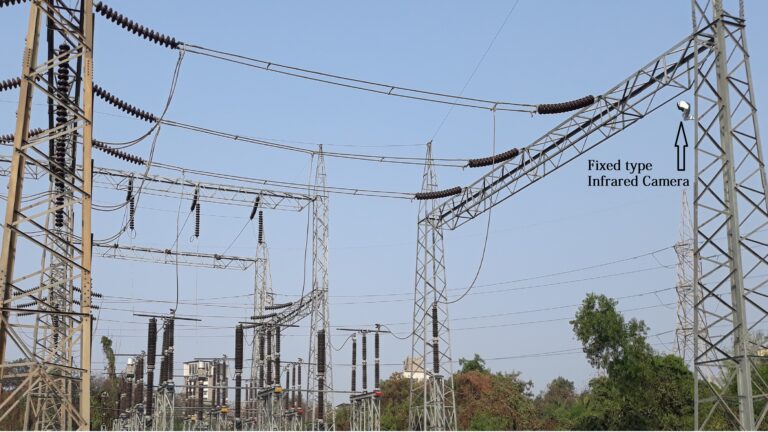
At some substations, a handheld portable infrared camera is used. This portable camera is moved around, and the complete substation is scanned manually for thermal anomalies.
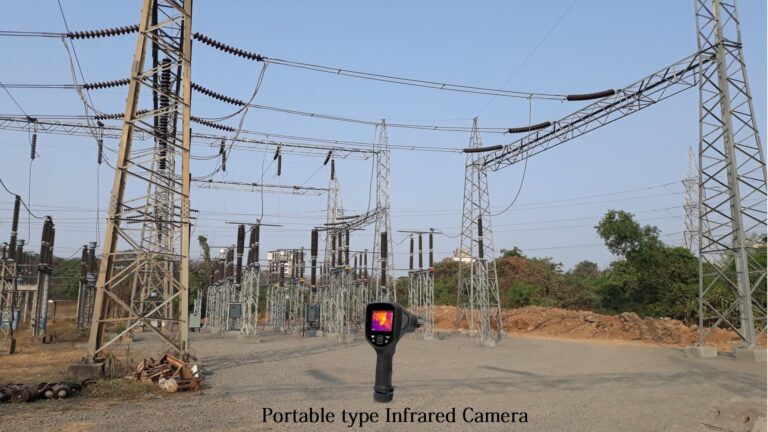
Now, let’s see some cases. In the pictures following, the first half is a thermal image of the equipment, and the second half is an actual image of the same equipment.
In this pic, we can see the thermal image and actual image of CT. In this CT thermal image, CT terminal temperature is 122.5 °Celsius and it looks bright and yellow as compared to other parts of the CT. such hot spots cannot be located with naked eyes.
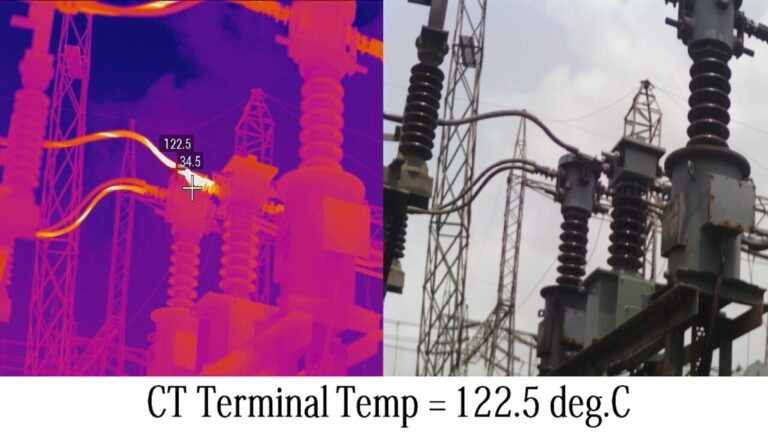
The Isolator palm temperature is 127.7 °Celsius.
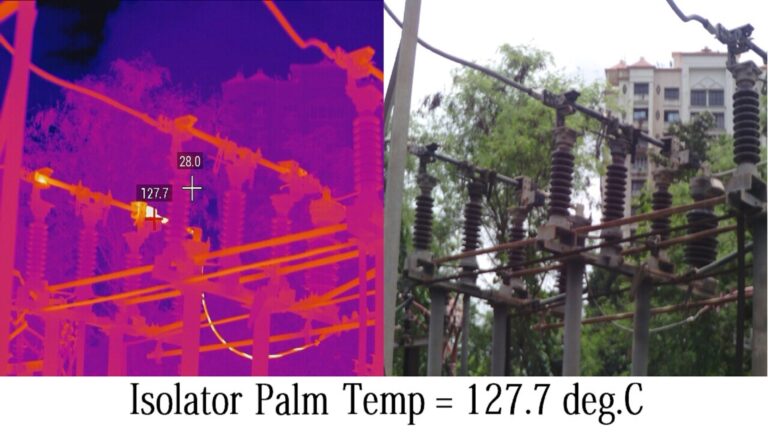
All these cases of hot spots should be attended as early as possible, for normal and smooth functioning of the electrical substation.
The following picture is taken at night, we can see a hot spot on the circuit breaker’s bottom palm. We can see, among these four nut bolts, that one nut bolt is glowing. That’s why it is visible at night without the infrared camera. But, since it is literally glowing, its temperature must be very high and it can break at any time. And this is not a desirable condition. Hence to avoid such a situation, it is necessary to do thermal imaging regularly.
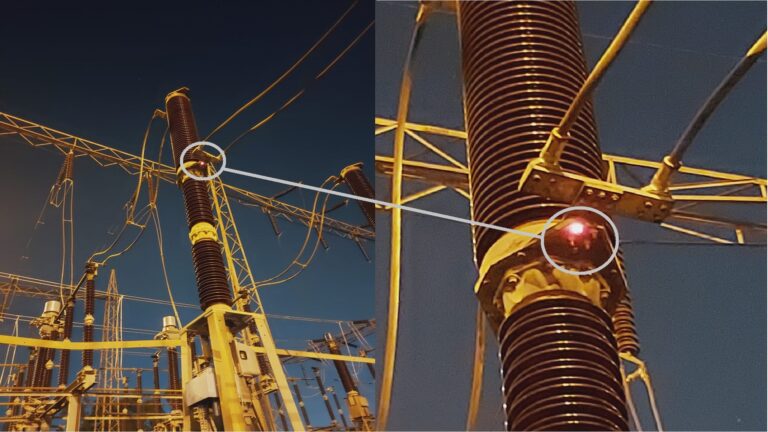
The temperature indicated, during thermal imaging depends upon multiple factors, such as ambient temperature, humidity, wind, and load on the equipment. If the ambient temperature is high, or the load is high, the temperature of the equipment would be relatively higher. While keeping these factors in mind, it is more meaningful to use comparative measurement. That is, comparing the temperature of two similar, & equally loaded electrical equipment. This method automatically cancels out other environmental factors, such as ambient temperature, humidity & wind, etc. For example, in balanced three-phase equipment, or conductors, there should not be a significant difference in temperature readings of each phase of the equipment.
Generally, in an electrical substation, connecting palms, crimping lugs, and clamps develop hot spots. In a nutshell, all the conductor joints or connection points in an electrical substation, are likely to develop hot spots. Oxidation of conductor joints, or loose joints develop hot spots. A Conductor with broken strands also develops excessive heat, and it is necessary to replace such conductors.
Some of the transformer checkpoints are, Cooling system, cool spots in the radiator indicate blockage of the vent. Also, temperature anomalies in the cooling fan, indicate electrical or mechanical problems in the fan. Also in the transformer, Thermal imaging of OLTC that is on load tap changer is done. Usually, the OLTC tank temperature should be equal to or lower than the transformer tank temperature. A high temperature of OLTC indicates, a problem in the tap changer, diverter chamber, or tap connections. Also, Transformer bushings and their connections should be checked.
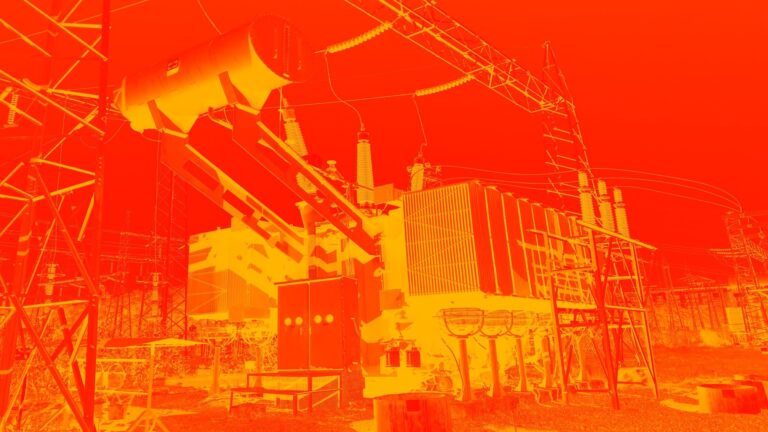
Nowadays, infrared technology has changed, from analog to digital, resulting in improved image quality. At some substations, infrared camera data is transferred manually and then analyzed. At some utilities, temperature scanning is automated, camera images are digitized, stored, and transferred to control centers in real-time.